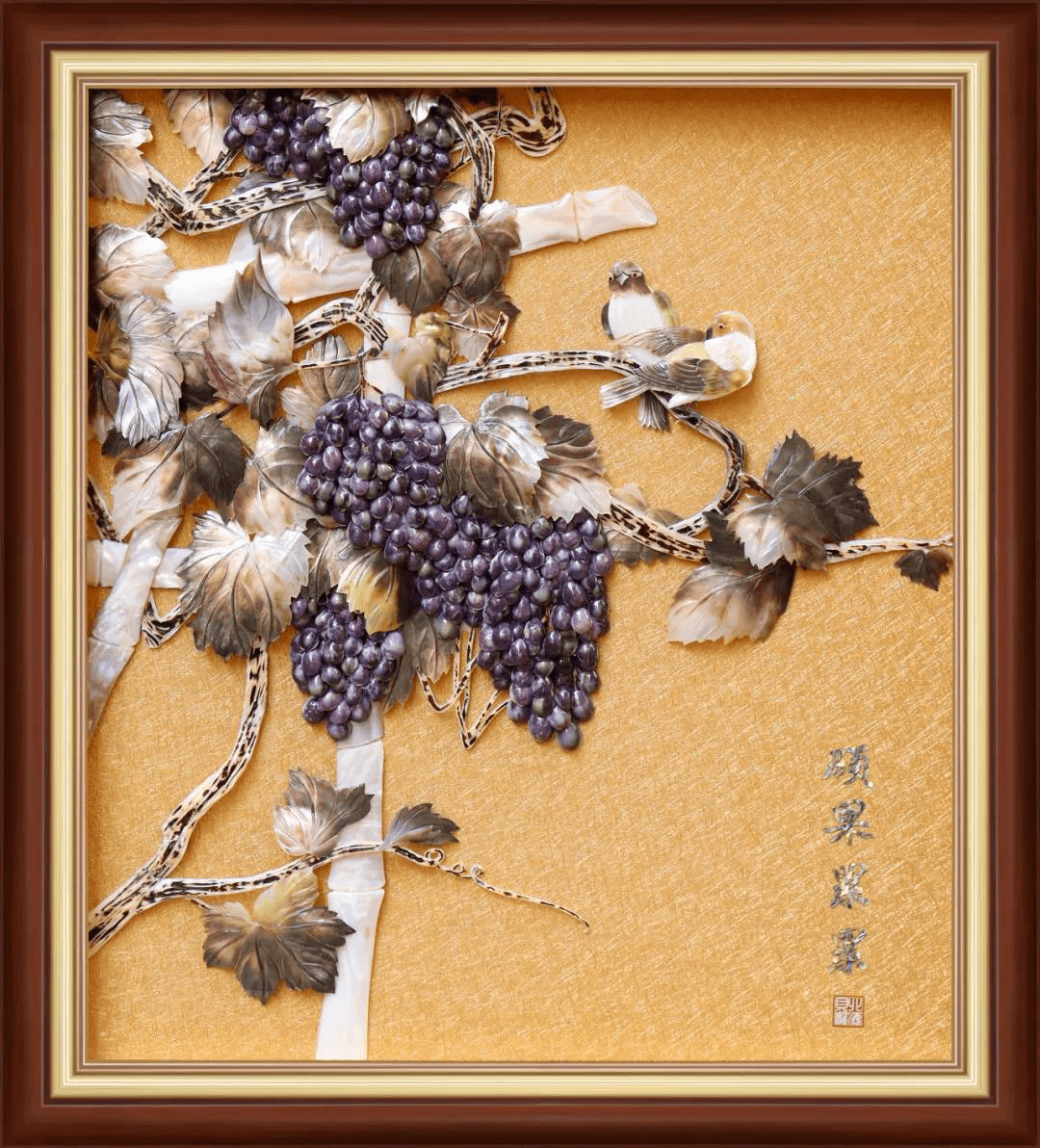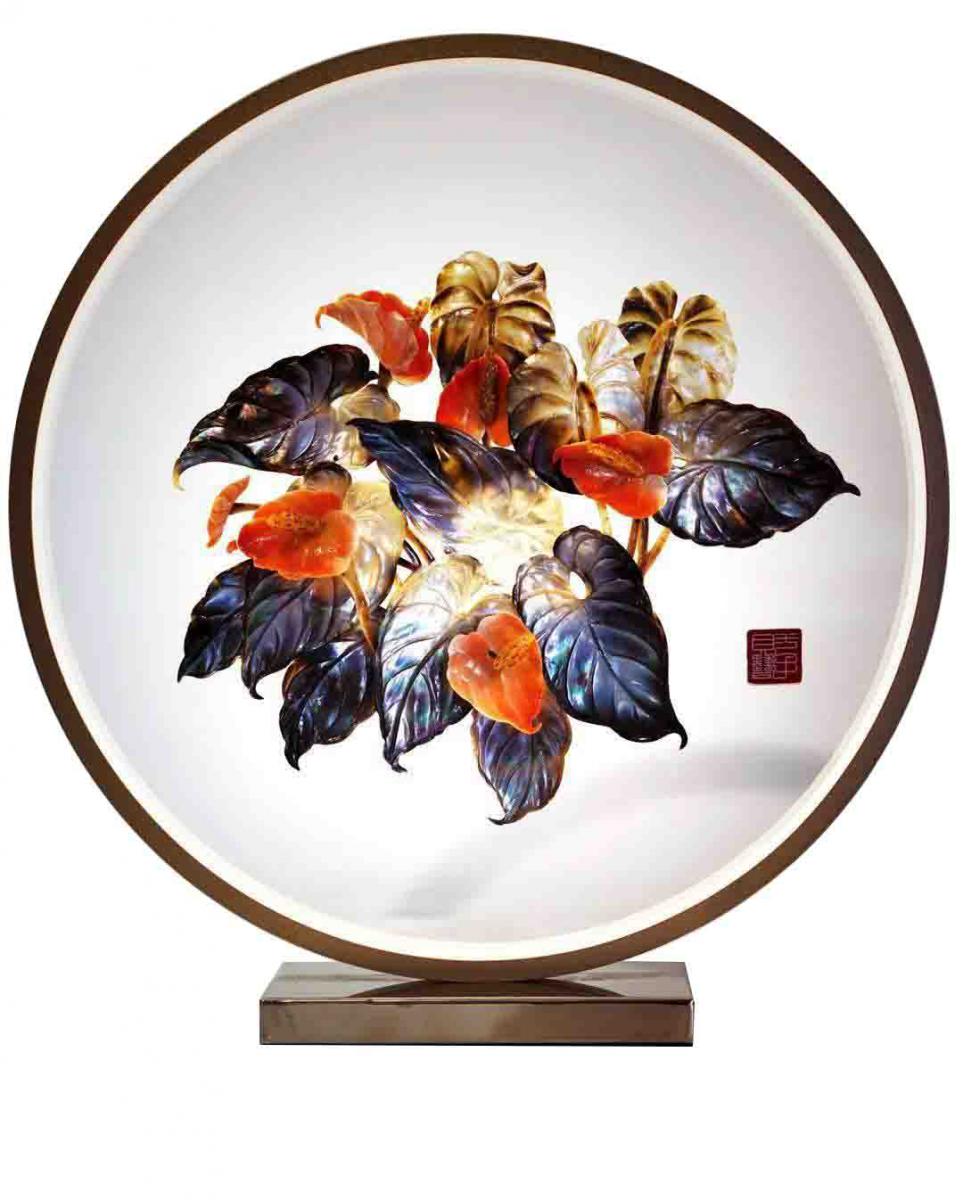How to Sell Seashells on the Shore-Behind Shell Carving
Publication time:2021-08-31 14:40:00
By Xie Zongming
Imagine yourself in a plain walking by the river. Suddenly, you saw a piece of “pebble” lying on the bank. Unlike any other pebble you've seen, this one has an incredibly smooth touch with fancy colors and regular shape. You were obsessed with this kind of novelty and decided to collect more of them until they are enough to make a beautiful necklace...This is basically what the primitive homo sapiens thought when they saw a seashell for the first time. For ancient Chinese people, whose civilization originated around the plains near the Yellow River and Yangtze River, seashells are rarely seen and thus treasured as currency or luxuries.
In Ming Dynasty, pearl farming flourished in Beihai because of the boom in economy
and technology. The shell carving craft was nourished by this “pearl rush” because seashells are the by-products of pearl farming.
Craft with a long history
The use of seashells enjoys a long history in China. From the early empire, Shang Dynasty (1600-770 B.C.), to the Spring and Autumn period (770-256 B.C.), seashells had been used as the daily currency. The evidence could be found in the Chinese writing system. In Chinese writing, characters related to money and trade often include the Chinese character of “seashell” as part of the structure. At that time, seashells were roughly penetrated and strung together in daily life, which influenced the structure of another character, “friend”, which looks like a string of seashells, meaning that friend is someone you are willing to spend money with.
Later in the Spring and Autumn Period and the Warring States period (256-221 B.C.) when metallurgy was advanced enough for metallic currency, seashells were used for adornment only. Luckily, the progress in technology also allowed craftsmen to better polish and carve the seashells. Instead of the rough process like penetration, craftsmen chose to grind the shells into thin slices, then they carved patterns or pictures on the shells. Combined with inlay techniques, these carved seashells could be used to decorate brass wares, mirrors, folding screens and desks. This kind of crafts is called “Luodian”, which means “the shells-inlaid”.
This Luodian craft spread across the country and succeeded in the coastal regions of China. Beihai city, known for its pearl farming industry throughout Chinese history, is one of the regions that inherited this technique and improved it into shell carving art. In Ming Dynasty (1368-1644 A.D.), pearl farming flourished in Beihai because of the boom in economy and technology. The shell carving craft was nourished by this “pearl rush” because seashells are the by-products of pearl farming. The craftsmen absorbed the essence in Chinese painting and calligraphy, for which the theme of the works covers landscape painting, flowers-and-birds painting, calligraphy works and so on. Since then, the shell carving craft in Beihai has become a true art of China.
Tips: The current usual form of Beihai shell carving is shell carving pictures, priced from several hundred yuan to tens of thousand yuan depending on the size of the work. Aside from pictures, it also includes a good amount of sculptures, in which the carved shells are glued or inlaid together.

The Beihai shell carving crafts are not only good choices for home decoration but also the national present in diplomatic occasions.

Ancient craft vibrant after innovation
In Ming Dynasty and Qing Dynasty, Beihai shell carvings were dominantly made in the family workshop, for which the production and quality control was rather poor even though this art was at its ascending period. In the 60s of the last century, Beihai finally had its art association and large workshop where the techniques on shell carving could be exchanged and the production could be regulated under the same standard. From this point on, the craft had entered a new stage of development.
The craftsmen, with the help of the association, were able to travel around China and learn from the masters of ivory carving, jade-and-marble carving, wood carving and traditional Chinese painting. With so many new techniques combined, the craftsmen started a revolution in seashell carving. The consistent of colors replaced the need for brightness. Works in this period are more of painting art instead of crafts. It was at this time that the masterpiece, Chengyang Bridge, was made and was chosen as the decoration in the Great Hall of the People.
However, this artistic craze was precisely what strangled it. In the 90s, the crafts were facing a lack of orders because they were too extravagant and expensive for home decoration. In addition, the demand in the overseas market shrank whereas the labor and material costs were rising. The industry and the inheritance of techniques faced another crisis.
Into the Millenium, a Guangdong company overtook the factory of the association and sent its R&D group to innovate the process. With their efforts, craftsmen centered their style around the words “natural” and “integration”. “Natural” is that the seashells are no longer dyed. Instead, the craftsmen will utilize the original color of each seashell. “Integration” means “to integrate modern designs with traditional techniques; to integrate western themes with eastern style”. This second revolution in Beihai seashell carving allows this art to live on, which is now enlisted in the National Intangible Cultural Heritages.
Let’s get back to the question at the beginning: how to sell seashells on the shore? I’d say the shells must be really exquisitely crafted.
Tips: The Beihai shell carving crafts are not only good choices for home decoration but also the national present in diplomatic occasions. Except for Chengyang Bridge, many other shell carving crafts are hanging as decoration in places like Beijing Capital International Airport, office building for the Ministry of Commerce of China.

